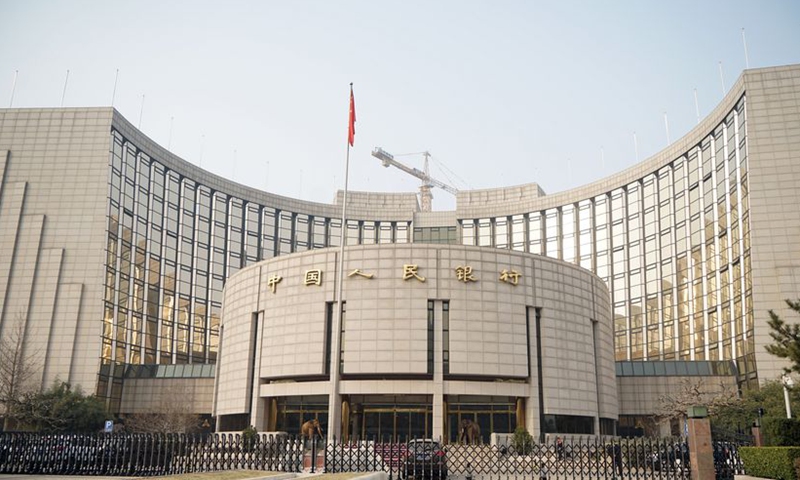
Suzhou City, east China's Jiangsu Province. /VCG
Suzhou City, east China's Jiangsu Province. /VCG
Editor's note: Matteo Giovannini is a finance professional at the Industrial and Commercial Bank of China in Beijing and a member of the China Task Force at the Italian Ministry of Economic Development. The article reflects the author's views, and not necessarily those of CGTN.
The role of digital currencies in today's financial world, exponentially increased as a result of the outbreak of COVID-19 pandemic, is commonly associated to the phenomenon of cryptocurrencies such as Bitcoin that due to skyrocketing returns have attracted a horde of short-term investors and speculators.
The systemic risk involved in the spread of an unregulated medium of exchange has promptly pushed the Chinese government to initially prohibit units or individuals to issue digital tokens placing a severe restriction on cryptocurrency commerce within the country's borders and then to develop an ambitious project to issue a sovereign-backed version of its paper currency.
In October this year, China's southeastern city Shenzhen, in partnership with the People's Bank of China (PBOC), launched a pilot program to promote the adoption of the digital currency via 50,000 "red envelopes" worth 200 yuan each via a random draw.
The received money can be spent in designated shops, thus to encourage the transition into a more cashless society while placing the country in the enviable position of a pioneer in leading the way for the future of money.
The decision made by the PBOC is viewed as a huge breakthrough since China was able to transfer from a previous purely theoretical internal testing to a successful implementation in reality with over 62,000 transactions executed during the week-long trial in Shenzhen.
Moreover, the positive feedback in Shenzhen demonstrates that China is fully committed in becoming the world's first leading country putting a central bank digital currency (CBDC) into circulation before the U.S., Britain or Japan.
Besides, there's also a rationale behind the selection of Shenzhen. Since the city is at the forefront in financial technology and represents the ideal location where to perform a smooth trial due to a digital-savvy population and considering the trading nature of Guangdong Province which is located in the highly dynamic and wealthy Greater Bay Area.

The People's Bank of China. /Xinhua
The People's Bank of China. /Xinhua
According to reports early this week, China's eastern city of Suzhou is also going to roll out a test of digital yuan on December 12, coinciding another Chinese online shopping festival, expected to bolster a shopping spree.
The proposed second test is trying to build on momentum.
Selecting Suzhou as the second city for the program is considered strategic. Suzhou is a popular tourist destination and one of China's most affluent cities along the economic belt of the Yangtze River Delta. It is a major economic center and focal point for trade and commerce located in the Yangtze River Delta and favored by the proximity to Shanghai, China's economic and financial capital.
Therefore, it is easy to see the pattern that the Chinese leadership has in mind in implementation of the sovereign digital currency starting from the rich coastal cities.
With a higher rate of disposable income and predisposition to daily transactions, these cities usually have a higher level of acceptance of technological innovation.
The successful adoption of digital currency in the Greater Bay Area followed by an expected favorable outcome in the proposed rollout in the Yangtze River Delta will make natural to predict that the next targeted area will be Xiongan since it belongs to the Capital Economic Zone, the third of the major urban clusters identified in 2010 by China's State Council.
Once the adoption is successfully accomplished within the three clusters located in the eastern part of the country, China will be finally ready to extend the pilot to the inner parts and less technologically advanced areas of the country resuming the Go West strategy launched in 2000 that served to boost the economic development of 12 western provincial-level regions.
China could then leverage the enormous opportunities offered by the strong relationship established with Southeast Asian countries through the recently signed Regional Comprehensive Economic Partnership (RCEP) and the cooperation with the 138 countries that are part of the Belt and Road Initiative (BRI) by using the digital yuan to fund transactions due to the superior speed, convenience, and safety that a virtual currency can guarantee.
In a word, China's goal of making the digital yuan an internationally accepted currency will follow a step-by-step approach. Chinese virtual currency has the potential to rapidly erode the long-time dominance of the U.S. dollar in global payments while creating a historical rebalancing of global power between the world's two largest economies.
(If you want to contribute and have specific expertise, please contact us at opinions@cgtn.com.)

